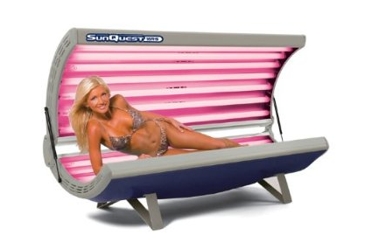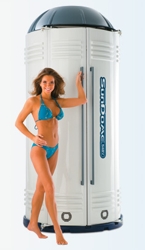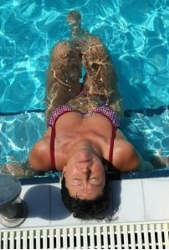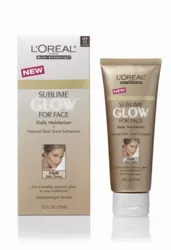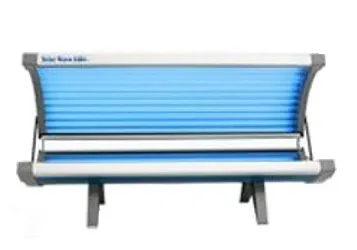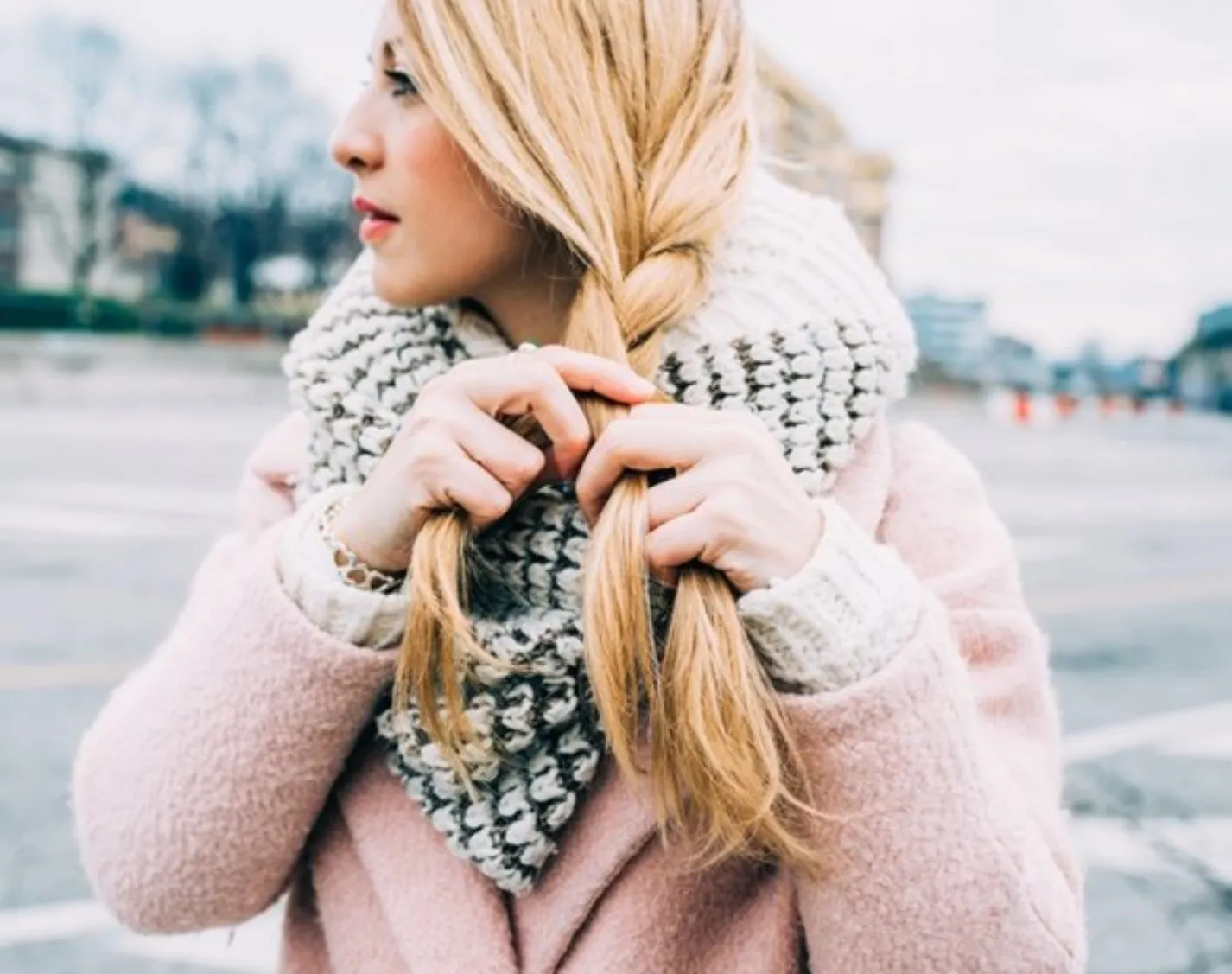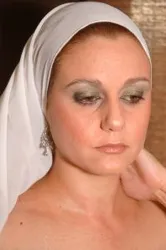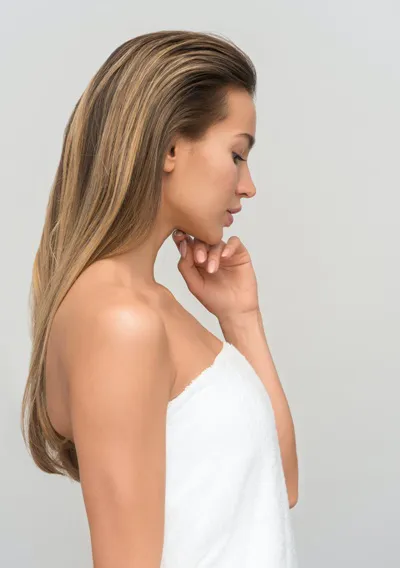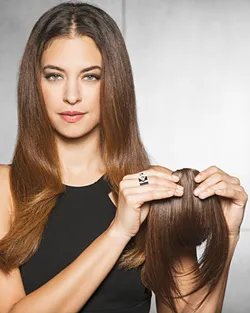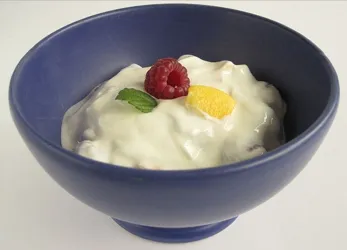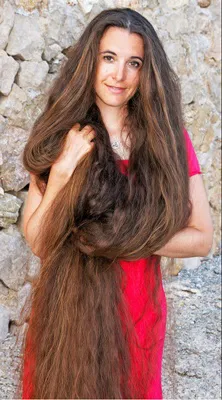
Summer Sun Skin Myths: Tanning Booths A Good Substitute?
Introduction
With all the bad press about sun worshipping, skin cancers and related dangers, many people are turning to tanning devices for their bronzed skin fix. Is this a good, bad or terrible idea? This article addresses a number of important facts and myths about tanning devices. Definition Of Tanning BedBy definition a tanning bed also referred to as a sun tanning bed is a device designed to emit ultraviolet radiation (typically 95% UVA and 5% UVB, +/-3%) which is used to produce a cosmetic tan without actually being directly exposed to the sun. Regular tanning beds use several fluorescent lamps that have phosphor blends designed to emit UV in a spectrum that is somewhat similar to the sun. Smaller, home tanning beds usually have 12 to 28 100 watt lamps while systems found in salons can run from 24 to 60 lamps, each consuming 100 to 200 watts. There are also "high pressure" tanning beds which are much more expensive. These beds generate primarily UVA with some UVB by using highly specialized quartz lamps, reflector systems and filters. Because of the higher costs involved these beds are less commonly used. Besides tanning beds there are also the tanning booth which is very similar to the bed but the user stands while tanning rather than lying down. The typical power output of the tanning booths tend to be much higher than in the beds.
The Good: Are Tanning Devices A Safe Way To Get A Summer Tan?Tanning beds initially became popular because they were considered to be a fast, enjoyable and safer way of achieving tanned skin without doing actual Sun time and risking a sunburn in the process. Tanning indoors offer a more controllable method for achieving the most consistent tan. Utilizing a tanning bed offers the advantage of being able to get the same amount of UV in a given period of time, day after day until the desired tan is reached. This consistency of tanning offered protection against burning. Most tanning beds offer a max session time of 20 minutes compared to the unlimited outdoor tanning times. The amount of UV which reaches the ground from the Sun when tanning outdoors can vary from minute to minute and longer outside tanning times results in a much deeper (and potentially more dangerous) sun exposure. This doesn't make the tan in a tanning bed safer, but it can reduce the chance of a sunburn as it allows total control over the amount of exposure a person receives. Tanning devices are also valued by people who have limited sun time due to work or life schedules. Not to mention the fact that once a tan is achieved via a tanning device it can be maintained with 1 or 2 refresher sessions per week. There are also positive psychological benefits tied to tanning which researchers have not yet quantified. The Bad: Pre-Tanning Does Not Offer Protection From OverexposureMany tanning bed users mistakenly believe once they have achieved totally tanned skin they are protected when outside in the sun. This is a common myth.
A tanned body usually has a natural SPF of between 2 and 4. Compared to sun protection products which offer SPFs of 15, 30 or higher, going pale faced on the beach with a great SPF offers more sun protection that long tanning bed sessions. Sun and skin care experts recommend that even pre-tanned Sun worshippers add additional SPF formulas to their skin. Vitamin D Benefit MythsOne benefit of cosmetic tanning is thought to be an increased production of vitamin D. While vitamin D has some very important benefits most tanning beds use bulbs with the same UVB relative to UVA rays as the Sun which produces the same level of vitamin D as if you were outside. Which means using a tanning bed to get vitamin D is probably not worth the increased risks from the tanning bed. In fact, many health experts suggest if you're worried about getting enough vitamin D on a daily basis that you amp up foods naturally flush with D or take supplements. Seasonal Affective Disorder (SAD) Benefits Of Tanning Beds?The jury's still out on the benefits of tanning beds for the treatment of Seasonal Affective Disorder (SAD). It's plausible the benefits many SAD patients experience are tied to tanning causing them to feel good in general, rather than specifically treating the SAD.
The Ugly: Adverse Effects On Health, Advanced Skin Aging, Cancer RisksThe World Health Organization (WHO) has formally come out against the use of UV tanning devices (beds or booths) because of the adverse effects on human health due to overexposure to UV radiation. The WHO lists the following health issues known to occur as the result of overexposure:
In July 2009, the IARC, a WHO agency released a report that placed tanning beds in its highest cancer risk category, “carcinogenic to humans.” The agency previously classified tanning beds as “probably carcinogenic.” The change comes after an analysis of more than 20 epidemiological studies indicating that people who begin using tanning devices before age 30 are 75% more likely to develop melanoma, the most deadly type of skin cancer. Higher Risk Of All Types Of Skin Cancer
Tanning beds substantially raise risks of skin cancer, including melanoma. Overexposure to ultraviolet radiation is known to cause skin cancer. Frequent tanning bed use triples the risk of developing melanoma, the deadliest form of skin cancer. There is also scientific evidence demonstrating each of the three main types of skin cancer, basal cell carcinoma (BCC), squamous cell carcinoma (SCC) and melanoma, is caused by UV exposure. Women who visited a tanning parlor at least once a month were 55% more likely to later develop melanoma than women who didn't artificially suntan. A 2009 Associated Press article stated, "International cancer experts have moved tanning beds and other sources of ultraviolet radiation into the top cancer risk category, deeming them as deadly as arsenic and mustard gas." US Public Health Service Reports On UV RadiationThe US Public Health Service states that UV radiation, including the use of sun lamps and sun beds are "known to be a human carcinogen." It further states that the risk of developing cancer in the years after exposure is greatest in people under 30 years old.
A report by the International Agency for Research on Cancer (IARC) suggested in 2005 that policymakers should consider enacting measures, such as prohibiting minors and discouraging young adults from using indoor tanning facilities. Studies have shown that melanoma and related carcinomas among young women are rapidly on the rise. In fact, in the last 30 years, melanoma diagnoses have increased by nearly 50 percent. Of course melanoma gets the big headlines because it is so deadly. However, doctors believe squamous and basal cell carcinomas directly linked to indoor tanning. While they are far more common than melanoma and are less likely to kill they can still require major surgery and scars. Multation Types Between UVA And UVBThe mutation types generally differ between UVA and UVB light. Mutant cells may die, or become cancerous, depending on which genes were mutated. Young women who used sun lamps for tanning while in their 20s had the largest increase in subsequent cancer risk – about 150% higher than similar women who did not use tanning beds. Overexposure to ultraviolet radiation induces at least two common genetic mutations. Those include cyclobutane–pyrimidine dimers (CPDs) and 6–4 photoproducts (6–4PPs) and their Dewar valence isomers. While DNA repair enzymes can fix some mutations, they are not sufficiently effective, as demonstrated by the relation to cancer, aging and other types of persistent mutation and cell death. For example, squamous cell carcinoma (a type of skin cancer) is caused by a UVB induced mutation in the p53 gene. UVA Light Associated With Increased Skin Aging And Wrinkling
UVA light specifically (sometimes called 'bronzing light') is clearly associated with increased skin aging and wrinkle production. This is because UVA penetrates the skin more deeply than UVB, and therefore causes damage on a deeper level. Most aging of skin is due to UVA rays destroying collagen and connective tissue beneath the superficial layer of the skin. UVB rays do not reach as far below the skin. Public Awareness Of Inside Tanning Risks Are LaggingIt's a common misconception that tanning beds are a safe way to get color. The truth is that they'll expose you to very harmful and carcinogenic levels of radiation, which are known to cause cancers that can be fatal. Although there is mounting evidence of tanning dangers in young people, one study conducted amongst a college student population found that awareness of the risks of tanning beds did not deter students from using them. Why? The indoor tanning industry aggressively promotes the use of tanning beds as a safe way to avoid burning, to look great and to get vitamin D which has proven to be a myth. The good news is that any cumulative harm from tanning definitely will diminish over time. Experts point out there no way to reverse any damage which has already occurred but quitting cold turkey will minimize ongoing or future health risks. Summary"Tanning is the body's way of showing damage--skin darkens from UV exposure because the body adds pigment in response to tissue injury," says David E. Fisher, M.D., chairman of the dermatology department and professor at Harvard's Massachusetts General Hospital and Harvard Medical School. "Many people believe that a tan is natural and healthy and a sunburn is the sign of sun overexposure. Actually, all forms of tanning, with or without burns, are dangerous." The best advice is to learn to love the skin you're in so you don't have to amp up it's glow with sun or dangerous articifical tanning devices. Social Media Network InformationPlease follow me on Twitter at: http://Twitter.com/HairBoutique. I look forward to meeting new Thank you for visiting us at The HairBoutique Blog and for leaving your comments. They are very much appreciated. We apologize in advance but must remove any direct advertisements or solicitations. - Revised Date: 05/22/10 | |||||||||||||||||||||
| If you want to talk more about this or other hair care articles on HairBoutique.com or anywhere else, please post a message on HairBoutique.com's Hair Talk Forums.
|
Social Media Network Information
Please follow us on Twitter at: https://Twitter.com/HairBoutique. I look forward to meeting new people from all walks of Twitter and learning from their Tweets.


